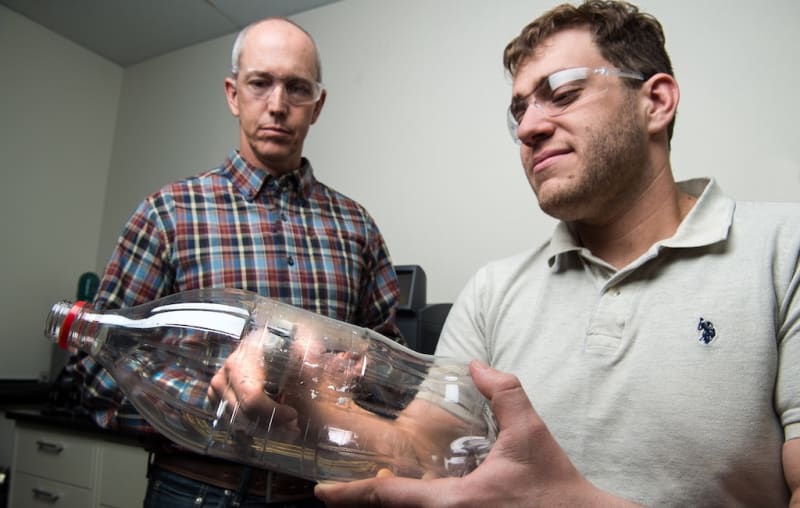

Eight million metric tons of plastic waste, including polyethylene terephthalate (PET) bottles, enter the oceans each year, creating huge man-made islands of garbage. Experts estimate that by 2050, there will be as much waste plastic in the ocean by mass as there are fish. It’s a global environmental problem that poses a serious risk to wildlife, particularly in marine environments.
Now imagine something as simple as a microbe that can degrade those plastic bottles. Such an organism exists. Ideonella sakaiensis 201-F6 is a recently discovered bacterium that can degrade PET using its PETase enzyme, but PETase doesn’t yet work fast enough to solve plastic recycling at the industrial scale.
However, while working to solve the crystal structure of PETase, an international team of researchers engineered the enzyme to be even better at degrading the man-made substance. Experiments were first conducted by taking samples of PET from soda bottles. After 96 hours of incubating PETase with the PET samples, it was evident that the PETase degraded PET via electron microscopy. The experiments originally were conducted to determine how the enzyme evolved from breaking down cutin—the waxy substance on the surface of plants—with cutinase, to degrading synthetic PET with PETase.
The team discovered that PETase looks very similar to a cutinase, but it has some unusual features including a more open active site, originally thought for accommodating man-made, rather than natural polymers. These differences indicated that PETase may have evolved in a PET-containing environment to enable the enzyme to degrade PET. To test that hypothesis, the researchers mutated the PETase active site to make it more like a cutinase. It was found that the PETase mutant outperforms the wild-type PETase in degrading PET. Understanding how PET binds in the PETase catalytic site using computational tools helped illuminate the reasons for the improved performance.
This unanticipated discovery suggests that PETase is not yet fully optimized to degrade PET. The research team can now apply the tools of protein engineering and evolution to continue to improve it, thus moving scientists closer to solving the problem of an ever-growing amount of discarded plastics that take centuries to biodegrade.
Significantly, the enzyme can also degrade polyethylene furandicarboxylate, or PEF, a bio-based substitute for PET plastics that is being hailed as a replacement for glass beer bottles. The enhanced oxygen barrier properties of PEF could lead to its widespread use in bottles that could ultimately find their way into the environment, adding to the pollution problem.
The researchers are now working on improving the enzyme further to allow it to be used industrially to break down plastics in a fraction of the time.
-
Awards
-
 2019 Sustainable Technologies Honorable Mention
2019 Sustainable Technologies Honorable Mention -
 2019 Top 100 Entries
2019 Top 100 Entries
Like this entry?
-
About the Entrant
- Name:Gregg Beckham
- Type of entry:teamTeam members:Gregg Beckham, Bryon Donohoe, Nicholas Rorrer, William Michener, Michael Crowley, and Christopher W. Johnson (National Renewable Energy Laboratory); John McGeehan, Harry Austin, Mark Allen, and Alan Thorne (University of Portsmouth); Fiona Kearns, Benjamin Pollard, and H. Lee Woodcock (University of South Florida); Rodrigo Silveira and Munir Skaf (University of Campinas); Ramona Duman, Kamel El Omari, Vitaliy Mykhaylyk, and Armin Wagner (Diamond Light Source); Graham Dominick and Lilly Amore (formerly of National Renewable Energy Laboratory)
- Patent status:none








